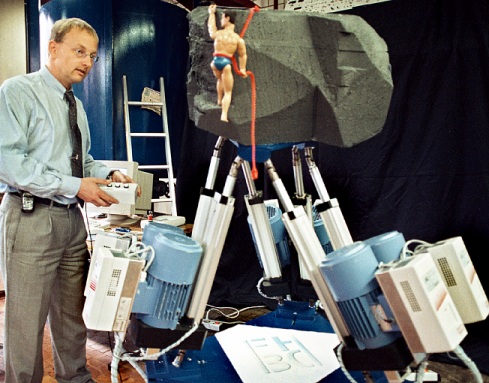
| Home > Reviews > HANDLEX: The Handling Parallel Robot | |
HANDLEX: The Handling Parallel Robot |
|
|
The HANDLEX was created during an internal research project of the University of Applied Sciences FH Bochum (Germany) somewhere around July 2000. The project was carried out by an elektical engineer and myself in partnership with a nearby company designing linear actuators (PAV - Antriebstechnik). Two students in mechatronics worked on the design and fabrication of the robot as part of their theses.
The DesignThe main topic of the little research projekt was to solve the control problem of a hexapod structure and on the other hand to realize this with a very low budget (German universities of applied sciences have the tenth of the budget of other universities). Our goal was to show our competence in mechatronic design. The following were the principal tools and components used to build HANDLEX:
Based on the above, we reached a performance accurate enough for positioning a in three axes with a 0.3 mm precision a working piece which has to be manipulated by a second robot carrying the tool. The motion speed is too low for hydro pulse testing applications because of the cheaper version of the frequency converters and, of course, because of the inefficient 0.5 KW AC-motor. The following are the characteristics of HANDLEX:
We hope to find applications, where the costs are more important than the speed or the accuracy. The total cost of the robot, excluding assembly cost, was about 12,000 Euro, or some 10,600 USD. Particularly, the robot can be used as a motion simulation or a welding jig carrier. Bibliography
Related Links
|
|
Home |
Bibliography |
Patents |
Terminology |
Reviews |
Software |
Who's Who |
News Site Map | Site Search | Contact Us | About Us |
| Copyright © 2000– by Ilian Bonev | Published on: March 31, 2002 |
